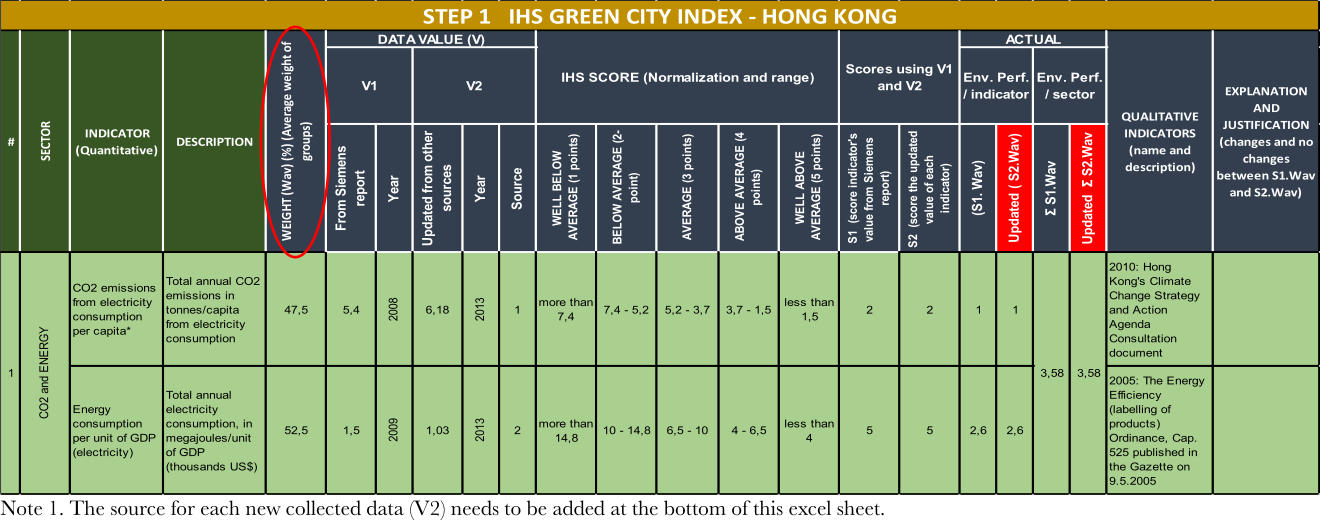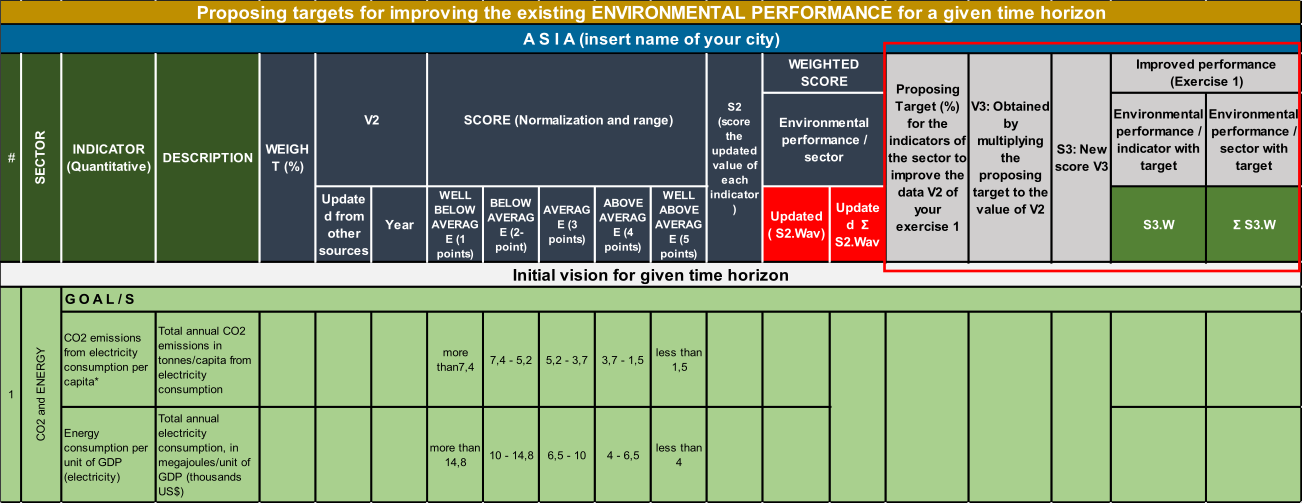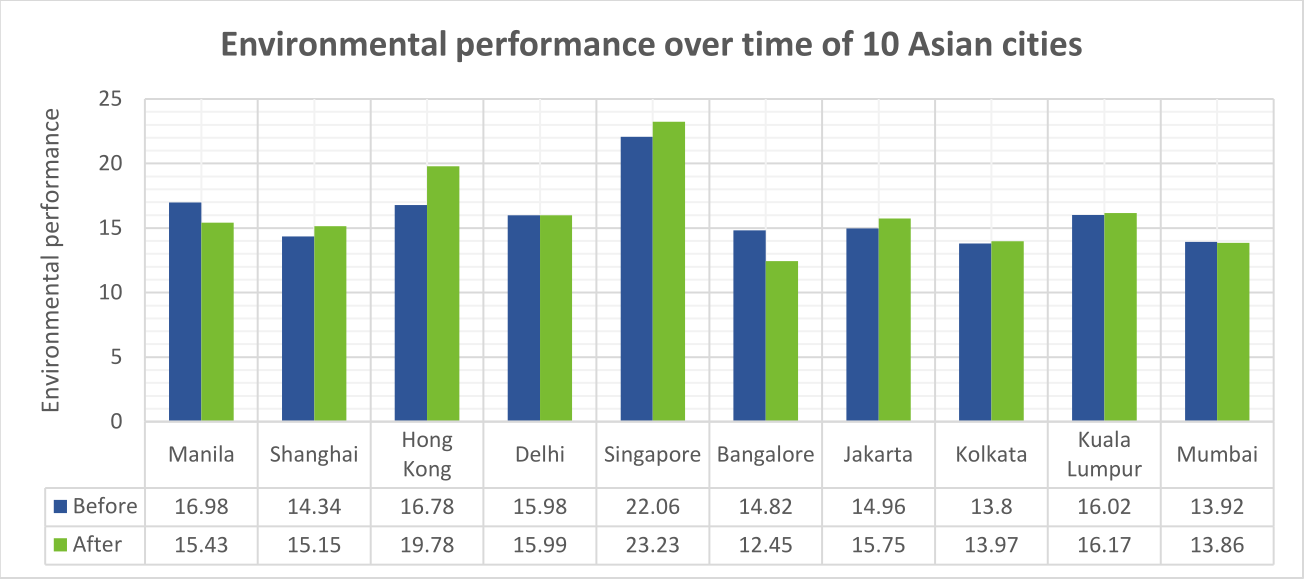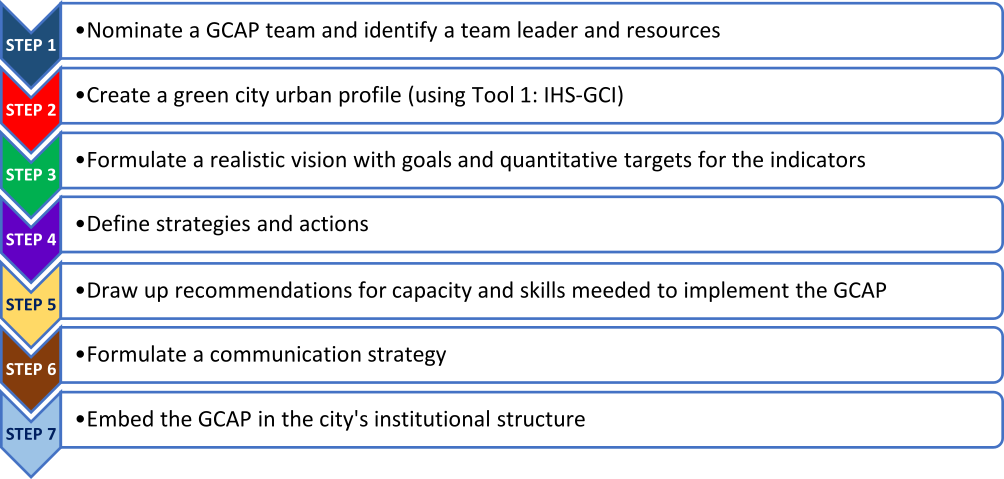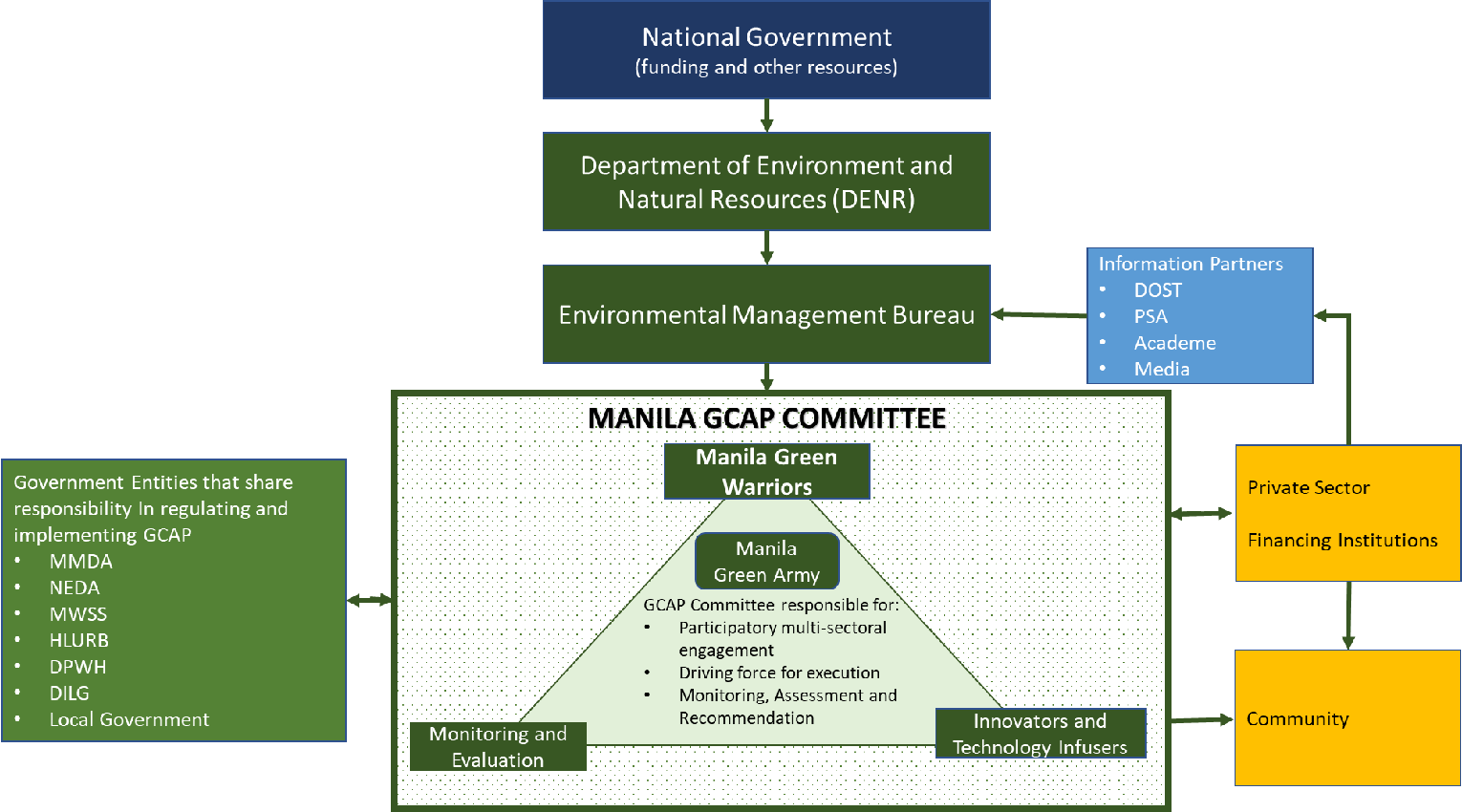Article Peer-Reviewed
Making Asian Cities Greener: A Tool to Measure Environmental Performance Over Time and a Method to Implement a Green City Action Plan
Department of Sustainability and Urban Resilience of IHS, Erasmus University, 3062 PA Rotterdam, The Netherlands
*
For correspondence.
Academic Editor:
Received: 8 December 2021 Accepted: 30 June 2022 Published: 7 July 2022
Abstract
This paper uses the IHS Green City Conceptual Framework (IHS-GCCF) to present and discuss the development and application of a tool to measure Environmental Performance (EP) over time applied to ten Asian cities and a method using these results to implement a Green City Action Plan (GCAP) applied to the city of Manila. The tool measures EP over time and helps to explain possible factors contributing to the variation of the EPs in the studied time. The GCAP uses the EP results to develop a green city action plan to improve the current EP for a given period. Both tool and method fulfil gaps found in the green city literature, contain innovative approaches, and help cities to measure and plan improvements in their current EP. By applying the EP tool to ten Asian cities in two periods (2007–2009 and 2015–2018), the paper shows that Singapore and Hong Kong had the highest EPs and Bangalore had the lowest. Implementation of water management and climate change strategies are some factors explaining the improvement in Hong Kong’s EP. A strong increase in population size is behind the EP reduction in Bangalore. The Manila GCAP proposes to improve the current EP of the city from 15.43 to 17.41 in twelve years.
Figures in this Article
Keywords
green city; environmental performance index; green city action planning; climate change; sustainability
Copyright © 2022
Brilhante and Skinner. This article is distributed under the terms of the Creative Commons Attribution License (CC BY 4.0), which permits unrestricted use and distribution provided that the original work is properly cited.
Cite this Article
ACS Style
Brilhante, O.; Skinner, J. Making Asian Cities Greener: A Tool to Measure Environmental Performance Over Time and a Method to Implement a Green City Action Plan. Highlights Sustain. 2022, 1, 113–128. https://doi.org/10.54175/hsustain1030009
APA Style
Brilhante, O., & Skinner, J. (2022). Making Asian Cities Greener: A Tool to Measure Environmental Performance Over Time and a Method to Implement a Green City Action Plan. Highlights of Sustainability, 1(3), 113–128. https://doi.org/10.54175/hsustain1030009
References
1.
Lehmann, S. What is green urbanism? Holistic principles to transform cities for sustainability. In Climate Change—Research and Technology for Adaptation and Mitigation; InTech: Rijeka, Croatia, 2011; pp. 243–266. https://doi.org/10.5772/23957
2.
Compact City Policies: A Comparative Assessment. In OECD Green Growth Studies; OECD Publishing: Paris, France, 2012. https://doi.org/10.1787/9789264167865-en
3.
Freire, M.E. Urbanization and green growth in Africa. Green growth series, Report number 1; Growth Dialogue: Washington, DC, USA, 2013. Available online: https://www.greengrowthknowledge.org/research/urbanization-and-green-growth-africa (accessed 6 July 2022).
4.
Elmqvist, T.; Andersson, E.; Frantzeskaki, N.; McPhearson, T.; Olsson, P.; Gaffney, O.; Takeuchi, K.; Folke, C. Sustainability and resilience for transformation in the urban century. Nat. Sustain. 2019, 2, 267–273. https://doi.org/10.1038/s41893-019-0250-1
5.
European Commission, Directorate-General for Regional and Urban Policy. Cities of tomorrow: Challenges, visions, ways forward. Publications Office: Luxembourg, 2012. https://doi.org/10.2776/41803
6.
Jabareen, Y.R. Sustainable urban forms: Their typologies, models, and concepts. J. Plan. Educ. Res. 2006, 26, 38–52. https://doi.org/10.1177/0739456X05285119
7.
Habitat III Issue Papers - 8: Urban and Spatial Planning and Design; UN Habitat: New York, NY, USA, 2015.
8.
Kahn, M.E. Green Cities: Urban Growth and the Environment; Brookings Institution Press: Washington, DC, USA, 2007.
9.
Green Cities; Lindfield, M., Steinberg, F., Eds.; Asian Development Bank: Manila, Philippines, 2012.
10.
Pace, R.; Churkina, G.; Rivera, M. How Green Is a Green City? A Review of Existing Indicators and Approaches; IASS: Potsdam, Germany, 2016. https://doi.org/10.2312/iass.2016.035
11.
Zoeteman, B.C.J.; Van der Zande, M.; Smeets, R. Integrated Sustainability Monitoring of 58 Eucities: A study of European Green Capital award Applicant Cities; Tilburg University: Tilburg, The Netherlands, 2015.
12.
Economist Intelligence Unit. African, Asian and European green city index—Assessing the environmental performance of major cities; Siemens AG: Munich, Germany, 2010.
13.
European green capital 2018: Good practice report; European Commission: Brussels, Belgium, 2016.
14.
Green City Development Tool Kit; Asian Development Bank: Manila, Philippines, 2015.
15.
Evaluation of IDB’s Emerging and Sustainable Cities Initiative; Inter-American Development Bank: Washington, DC, USA, 2016.
16.
Green city program methodology; European Bank for Reconstruction and Development: London, UK, 2016.
17.
Sandhu, S.C.; Singru, R.N. Enabling GrEEEn cities: An Operational framework for integrated urban development in South East Asia. In ADB SouthEAST Asia working paper series; Asian Development Bank: Manila, 2014.
18.
Davidson, F.; Pennink, C.; Fritschi, Bep; Peltenburg, M.; Mengers, H.; Teerlink, H.; IHS action planning workbook, IHS: Rotterdam, 2013
19.
Brilhante, O.; Klaas, J. Green City Concept and a Method to Measure Green City Performance over Time Applied to Fifty Cities Globally. Sustainability, 2018, 10, 2031. https://doi.org/10.3390/su10062031
20.
Brilhante, O. The compact city versus making room for future city expansion in the context of Nampula, Mozambique. TRIALOG 2017, 128, 1.
21.
Ayik, C.; Ayatac, H.; Sertyesilisik, B.; A Gap Analysis on Urban Sustainability Studies and Urban Sustainability Assessment Tools. Archit. Res. 2017, 7, 1–15. https://doi.org/10.5923/j.arch.20170701.01
22.
Saha, D. Empirical research on local government sustainability efforts in the USA: Gaps in the current literature. Local Environ. 2009, 14, 17–30. https://doi.org/10.1080/13549830802522418
23.
Campbell, S.; Green cities, growing cities, just cities? Urban planning and the contradictions of sustainable development. J. Am. Plan. Assoc. 1996, 62, 296–312.
24.
Tjallingii, S.P. Ecological Conditions. Strategies and Structures in Environmental Planning. Ph.D Thesis, TU Delft, Delft, The Netherlands, 1996.
25.
Matsumoto, T. Compact city policies: Comparative assessment. In Proceedings of the 47th ISOCARP Congress, Wuhan, China, 24–28 October 2011.
26.
Greenest City2020 Action Plan. Availablie online: http://vancouver.ca/files/cov/Greenest-city-action-plan.pdf (accessed 6 July 2022).
Metrics
Loading...
Journal Menu
Journal Contact
Highlights of Sustainability
Editorial Office
Highlights of Science
Avenida Madrid, 189-195, 3-3
08014 Barcelona, Spain
08014 Barcelona, Spain
Cathy Wang
Managing Editor
